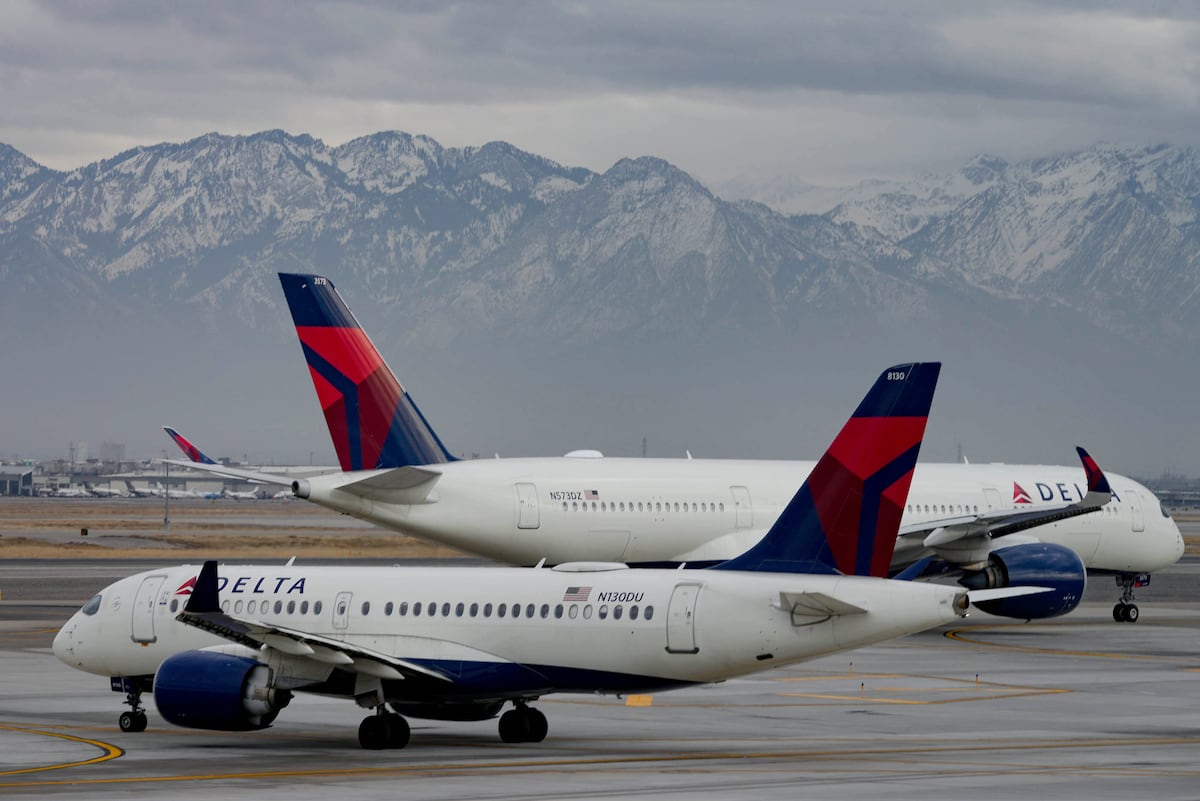T4K3.news
Salt Lake City ranks among top U.S. airports for turbulence
Salt Lake City International Airport ranks fourth for turbulence in North America after Delta flight incident.

A recent turbulence incident raises questions about flight safety at Salt Lake City's airport.
Salt Lake City ranks fourth in turbulence among U.S. airports
Salt Lake City International Airport has ranked fourth among North America's airports for turbulence, according to data from Turbli, a website that analyzes turbulence based on eddy dissipation rates. This ranking follows an event where 25 individuals were injured on a Delta Air Lines flight after it encountered severe turbulence over Wyoming, forcing it to divert to Minneapolis for medical assistance. While turbulence is common, such severe incidents are rare, especially on larger aircraft like the Airbus A330-900neo. Despite Salt Lake City’s high ranking, the data indicates that most flights are subject to only light turbulence. Researchers suggest that climate change is likely to impact turbulence patterns, especially along southern U.S. routes. Current forecasting tools are available, but accuracy diminishes further from departure, with turbulence predictions being about 75% reliable.
Key Takeaways
"This event serves as a reminder of the challenges faced by the aviation industry."
The turbulence incident highlights potential safety issues in air travel.
"While percentages say most flights experience light turbulence, fear can grip travelers easily."
Passengers may feel nervous about flying despite data showing most flights are not severely turbulent.
The turbulence incident at Salt Lake City Airport serves as a reminder of the challenges faced by the aviation industry. While high turbulence rankings may cause concern among travelers, the fact that most flights are only lightly affected can provide some reassurance. As climate change continues to reshape weather patterns, its impact on air travel cannot be neglected. Improved forecasting tools may help mitigate the effects of turbulence, yet the overall unpredictability remains a concern that airlines and passengers must navigate together.
Highlights
- Flying high in turbulent skies raises safety concerns for all travelers.
- Understanding turbulence can help ease passenger fears before flight.
- The turbulence rankings may influence how people choose their flights.
- Climate change's impact on air travel is a growing concern.
Concerns over flight safety and turbulence forecasts
Incidents like the Delta Air Lines turbulence raise crucial questions about passenger safety and predictions of turbulent conditions. With climate change potentially affecting these patterns, the aviation community must address safety protocols and forecasting efficacy.
With advancements in forecasting, future travel may become safer and more predictable despite turbulence.
Enjoyed this? Let your friends know!
Related News

Delta's Sky Club lounges face overcrowding issues

New report reveals top U.S. cities for job opportunities

Delta flight experiences severe turbulence, 25 injured

Delta flight suffers severe turbulence during journey

Twenty-five hospitalized after Delta flight incident

Delta Airlines flight diverted due to significant turbulence

Kansas City Current acquire Ally Sentnor from Utah Royals

U.S. Housing Market Experiences Significant Slowdown
